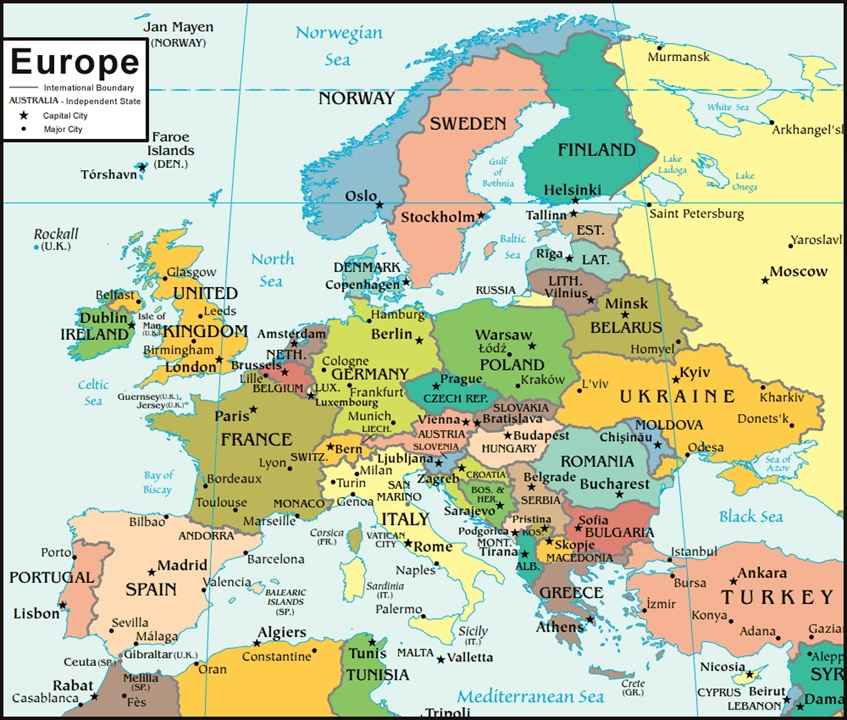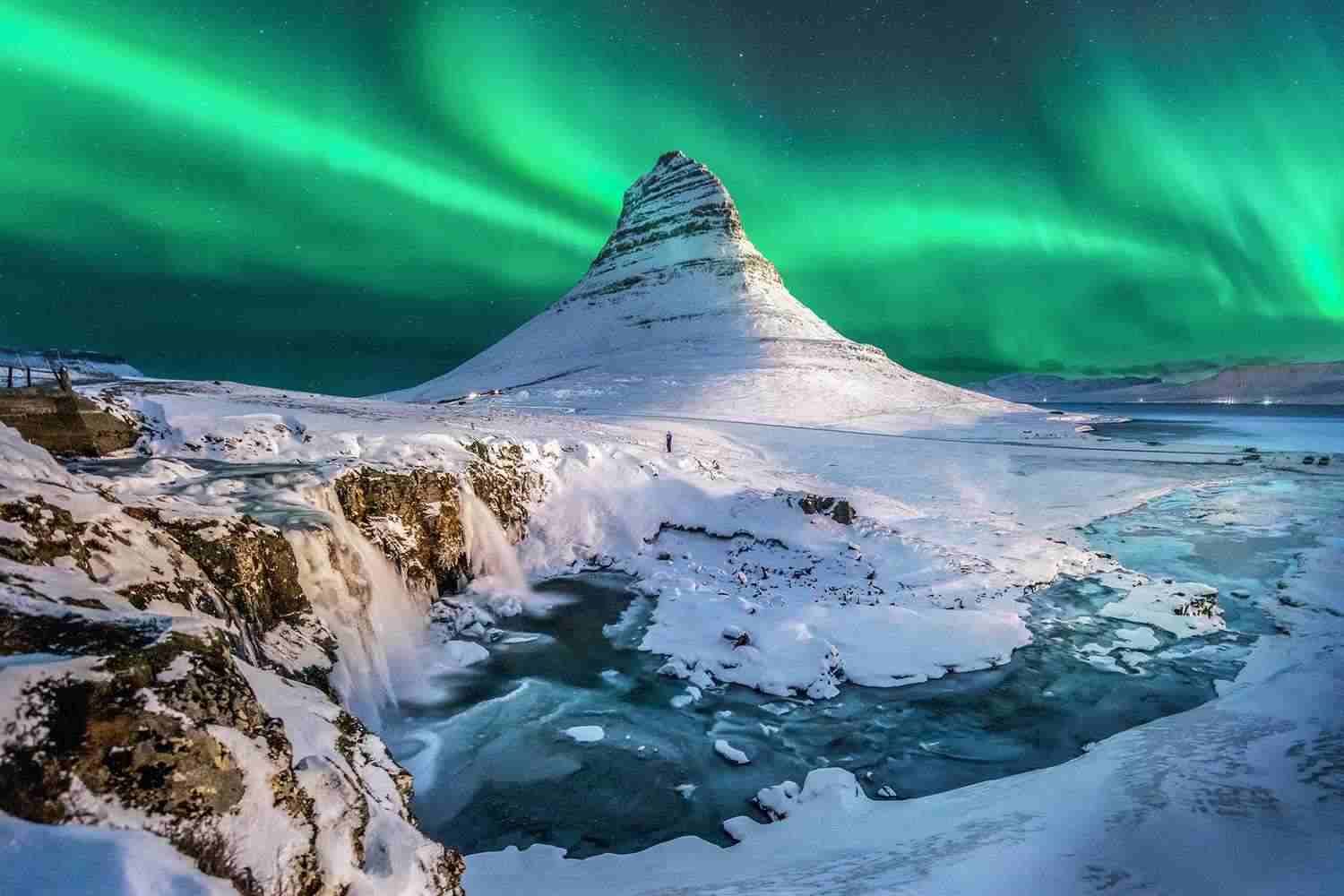Europe may be the second-smallest continent by land area, but it packs a punch when it comes to culture, history, and diversity. Home to over 750 million people, Europe is a mosaic of more than 40 countries, each with its unique charm, language, and legacy. From the icy fjords of Norway to the sun-soaked coasts of Greece, the continent offers a stunning variety of landscapes and lifestyles. Despite covering only about 10.53 million square kilometres, Europe has played a central role in shaping global politics, science, art, and philosophy.
Geographically, Europe lies entirely in the Northern Hemisphere and mostly in the Eastern Hemisphere, sharing its vast landmass—Afro-Eurasia—with Asia and Africa. Its borders are defined by natural landmarks like the Arctic Ocean, the Atlantic Ocean, the Mediterranean Sea, and the Ural Mountains. Beyond its rich geography, Europe is also linguistically diverse, with English being the most widely spoken language. In this article, we’ll take a closer look at the countries that make up Europe, along with some fascinating facts, their population and area.
Europe: A Snapshot
-
Size & Population: Second-smallest continent (after Australia), but third-most populous, with over 750 million people.
-
Location: Entirely in the Northern Hemisphere, mostly in the Eastern Hemisphere.
-
Area: Approx. 10.53 million km² (4.06 million mi²).
-
Geographical Borders:
-
North: Arctic Ocean
-
West: Atlantic Ocean
-
South: Mediterranean Sea
-
East: Black Sea, Caspian Sea, Ural Mountains
-
-
Part of Afro-Eurasia, sharing landmass with Asia and Africa.
-
Languages: Highly diverse—English, German, French, Russian, Italian, Spanish, Greek, Portuguese, Nordic & Eastern European languages.
 Map of Europe
Map of Europe
List of European Countries
There are 50 countries in Europe, but only 44 of them have their capital city on the European continent. The largest country in Europe is Russia, followed by Ukraine and France. The smallest country in Europe is Vatican City, which is only about 0.44 square kilometres (0.17 square miles) in area.
Here is a list of European countries:
| 1 | Russia |
| 2 | Germany |
| 3 | United Kingdom |
| 4 | France |
| 5 | Italy |
| 6 | Spain |
| 7 | Ukraine |
| 8 | Poland |
| 9 | Romania |
| 10 | Netherlands |
| 11 | Belgium |
| 12 | Czechia |
| 13 | Greece |
| 14 | Portugal |
| 15 | Sweden |
| 16 | Hungary |
| 17 | Belarus |
| 18 | Austria |
| 19 | Serbia |
| 20 | Switzerland |
| 21 | Bulgaria |
| 22 | Denmark |
| 23 | Finland |
| 24 | Slovakia |
| 25 | Norway |
| 26 | Ireland |
| 27 | Croatia |
| 28 | Moldova |
| 29 | Bosnia and Herzegovina |
| 30 | Albania |
| 31 | Lithuania |
| 32 | North Macedonia |
| 33 | Slovenia |
| 34 | Latvia |
| 35 | Kosovo |
| 36 | Estonia |
| 37 | Montenegro |
| 38 | Luxembourg |
| 39 | Malta |
| 40 | Iceland |
| 41 | Andorra |
| 42 | Monaco |
| 43 | Liechtenstein |
| 44 | San Marino |
| 45 | Holy See |
Top 10 European Countries by Population
Here are the top 10 European countries by population, with their estimated populations as of 2023. Russia is by far the most populous country in Europe, with over 145 million people. Germany, the United Kingdom, France, and Italy are the next four most populous countries, each with over 60 million people.
| Top 10 European Countries By Population | |
| European Countries | Population |
| Russia | 145.6 million |
| Germany | 83.1 million |
| France | 68 million |
| United Kingdom | 66.8 million |
| Italy | 60.2 million |
| Spain | 47 million |
| Ukraine | 44.3 million |
| Poland | 37.9 million |
| Romania | 19.3 million |
| The Netherlands | 17.3 million |
Top 10 European Countries in Terms of Area
Here is a list of the top 10 European countries in terms of area, with their land area in square kilometers (km2). Russia is by far the largest country in Europe, both in terms of population and area. Ukraine is the second largest country in Europe, followed by France, Spain, and Sweden.
| Top 10 European Countries in Terms of Area | |
| European Countries | Area Covered |
| Russia | 17,098,246 km² |
| Ukraine | 603,500 km² |
| France | 543,940 km² |
| Spain | 505,992 km² |
| Sweden | 450,295 km² |
| Germany | 357,114 km² |
| Finland | 338,425 km² |
| Norway | 323,802 km² |
| Poland | 312,696 km² |
| Italy | 301,339 km² |
Interesting Facts about Europe
 The northern lights, or the aurora borealis
The northern lights, or the aurora borealis
Highest Mountain in Europe
The highest mountain in Europe is Mount Elbrus, which is located in Russia. It is 5,642 meters (18,510 feet) tall. The largest lake in Europe is the Ladoga Lake, which is located in Russia. It is 17,700 square kilometers (6,830 square miles) in area. The longest river in Europe is the Volga River, which is also located in Russia. It is 3,690 kilometers (2,290 miles) long.
How Many Countries Are There In North America?
Four Regions in Europe
Europe is a diverse and fascinating continent with a rich history and culture. It is a popular tourist destination, and it is home to some of the world's most famous cities, such as London, Paris, Rome, and Berlin.
Europe can be divided into four main regions: Northern Europe, Western Europe, Eastern Europe, and Southern Europe.
Northern Europe includes countries such as Norway, Sweden, Finland, Denmark, and Iceland. This region is known for its cold climate, its beautiful fjords, and its Nordic cultures. As per the United Nations Population Division, approximately 106 million people reside in Northern Europe (in 2020). Denmark is the world’s cleanest European city, as per the World’s Population Review Report 2023. The Northern Lights, known also as aurora borealis, are spotted in the sky of Norway.
Western Europe includes countries such as France, Germany, the United Kingdom, Spain, and Italy. This region is known for its rich history, its vibrant cities, and its beautiful countryside. As per the United Nations Population Division, approximately 196 million people reside in Western Europe (in 2020). The Matterhorn, one of the most famous and iconic pyramid shape mountain in the world can be found in Switzerland.
Eastern Europe includes countries such as Russia, Ukraine, Poland, Romania, and Hungary. This region is known for its diverse cultures, its stunning architecture, and its natural beauty. As per the United Nations Population Division, approximately 293 million people reside in Eastern Europe (in 2020). Wilanów Palace, one of Poland's most important monuments, is located in the Wilanów district of Warsaw.
Southern Europe includes countries such as Greece, Italy, Spain, Portugal, and Turkey. This region is known for its sunny climate, its beautiful beaches, and its ancient ruins. As per the United Nations Population Division, approximately 152 million people reside in Southern Europe (in 2020). Vatican city is the least populated country in the world with a population of just over 800 persons.
Check out some of our personality tests, puzzles, and optical illusions too!
Comments
All Comments (0)
Join the conversation